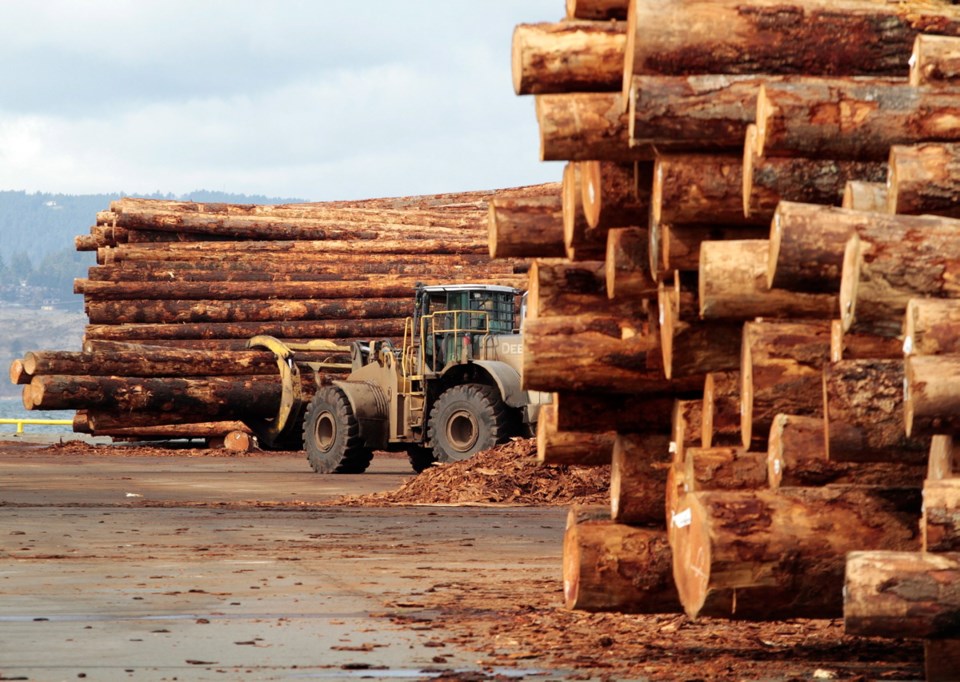Forestry companies have announced closures and production cuts at more than two dozen mills in the B.C. over the past year, affected thousands of workers and many communities.
A number of forces led to us to this point. They include wildfire devastation, with 2017 and 2018 both setting records for area of forest burned. High log costs and low prices due to a slowing U.S. market contribute.
We’re also at the end of the mountain pine beetle harvest — a period of high timber cuts permitted to salvage as much beetle-killed timber from the landscape as possible while it was still worth something.
When about 200 empty logging trucks from across province drove into Vancouver in September, it was to protest the job losses. The drivers hailed from communities suffering financial hardship, including Burns Lake, Fort St. James, Fort St. John, Mackenzie and Merritt.
It’s no coincidence that many of the communities closely tied to the recent closures are in the heart of mountain pine beetle country.
Back in 2003, I’d just started working at a forest research lab. One of the organization’s directors was explaining to me the work they were doing related to the mountain pine beetle outbreak that was then sweeping across the province’s lodgepole pine forests.
New to my role, I must have looked pretty blank, because he stopped short and said: “You have to understand, this is an epidemic. There’s no cure and, other than really cold temperatures clamping down on the most of the province in early October, there’s no way to stop it.”
He started itemizing the cascade of the outbreak’s impacts.
• Millions of mature trees killed across millions of hectares of the province.
• Major changes to forest ecosystems across the landscape.
• Forests that would take decades to recover and decades more to mature.
• Ecological effects, including as-yet-unknown effects on wildlife and other organisms, on snowmelt, storm run-off and erosion, on salmon-bearing streams and salmon stocks, on the landscape’s ability to store rainwater and release it later during dry spells, on seasonal flooding.
• Increased logging for about a decade or so in order to salvage as much beetle-killed timber off the landscape as possible, followed by punishingly steep declines in the amount of timber that could be cut from the landscape each year.
• Mills closing and people being laid off in B.C.’s forest-dependent communities and regions, and most particularly in the communities of the province’s central Interior, where the outbreak hit hardest.
• Communities suffering and dying because of the loss of jobs.
• Social fallout, including more bankruptcies, more foreclosures, more divorce, more domestic violence, and all the other ills that crop up when families face economic distress.
• Loss of taxes and increasing pressure on the province’s social-support systems.
The unfolding consequences were pronounced steadily and relentlessly. In my memory, the conversation has taken on the quality of a bell tolling.
In other words, he was describing a catastrophe — an inexorable, slow-motion catastrophe.
Sixteen years later, that catastrophe is still unfolding.
The beetle epidemic itself peaked in 2005. By 2012, it had affected more than 18 million hectares of forest to some degree, and resulted in cumulative losses of about 750 million cubic metres — equal to 58 per cent — of merchantable pine volume, primarily in B.C.
Exact numbers weren’t known beforehand, but the eventual scale was no surprise. What the province, those many communities, and the people living there are experiencing now was also foreseen and foreseeable.
The hot dry summers that fed the 2015, 2017 and 2018 wildfire seasons were not forecast in 2003, but the amount of dead wood on the landscape to feed those fires was predicted. Nobody could have known the U.S. would find itself in a trade war in 2019, but the end to the salvage logging was predetermined.
No crystal ball was needed to foretell that the mills and pest-sanitation plants built overseas so B.C. could cash in as many raw, beetle-killed logs as we could while they were still worth something would continue to demand Canadian logs when that ready supply dried up.
We also knew that, when the salvage supply dried up, the industry, workers, families and communities would suffer.
We’ve been confronting many of the beetle outbreak’s consequences for years. We’re now facing the foreseen economic and social consequences.



